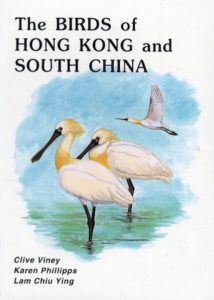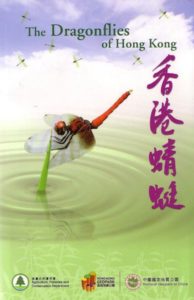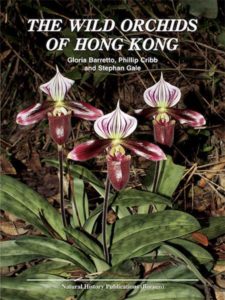With yet another business trip rapidly approaching – this time to a new destination for me: Hong Kong – I found myself a bit flat-footed as to proper preparation. Not what clothes and such to pack, of course; rather what natural history guides to obtain to get an understanding of what I might see while there, and which to take along for reference on the spot if needed.
Although this trip will be a tight one, schedule wise, there are always opportunities for a bit of naturalist exploration. And even if these are minimal, birds, arthropods, plants, and other forms of life can always be found in even the most over-developed of locations. As my exceptionally tolerant and often-inconvenienced wife and daughter will attest, a good naturalist is always prepared to stop and observe even the most seemingly insignificant of things – regardless of the originally intended activity at hand.
Time being short, I put out a request for guidance in my preparations through my Twitter account. While many helpful replies were received, one good gentleman, Mr. Andrew Hardacre, provided the majority of them as well as very kindly offering further assistance should I wish to correspond. Not one to pass up such an opportunity, I opened a line of communication with him, to which he quickly replied with a letter that was so rich in information and so eloquently written that I begged his permission to republish it in The Well-read Naturalist. To this, much to my delight and heart-felt gratitude, he most graciously agreed.
The text below is – with the excision of a few personal comments – the entirety of his letter.
Dear John,
Let’s start with birds!
A very good website is David Diskin’s Birding Hong Kong.
This will tell you what is about to begin with. Mai Po is a terrific site but needs permits. You can get day permits if you book them. At migration time they will be in demand. The main reason people go to Mai Po is for waders and therefore it is important to check the tides before you go. There are several hides but all get crowded at peak times and the photographers arrive early to get the best seats. Using a guide like David Diskin, John Holmes or Martin Williams can smooth the way but you can do it yourself with a little planning. You can also visit the Wetland Centre which has less onerous access requirements. These sites require transport as they are not central but public transport will get you there if you can work out which buses you need. Taxis are cheap in HK but it depends where you will be based as most tunnels charge toll fees and these can be expensive. Note that some taxi drivers won’t speak good English and not all taxis serve all areas. The red ones serve HK Island and/or Kowloon, the green ones the New Territories and the blue ones Lantau.
David’s site includes some suggestions for where to go and Po Toi is excellent but the ferry service is not frequent and especially during the week you get limited time there.
 There are various guides for HK birds but only one can really be described as a fieldguide. The 8th edition of The Birds of Hong Kong and South China is 13 years old and needs updating. Another possibility is [Mark] Brazil’s Birds of East Asia (Helm). There is a lot of material online especially the Oriental Bird Club‘s image database.
There are various guides for HK birds but only one can really be described as a fieldguide. The 8th edition of The Birds of Hong Kong and South China is 13 years old and needs updating. Another possibility is [Mark] Brazil’s Birds of East Asia (Helm). There is a lot of material online especially the Oriental Bird Club‘s image database.
There are several butterfly books. The Hong Kong Butterflies book by Lo & Hui is good but a little heavy. Also published in 2005. The AFCD site has a lot about the various species but is hopelessly out of date.
 There is only one guide to insects generally and that is not reliable but better than nothing. However there are quite a few books by the HK EntSoc on everything from True Bugs to Fireflies to Mantidae. These are slimmer, cheaper but I’m not sure how wide and deep you wish to delve. There are good dragonfly guides and the most recent has the snappy title of The Dragonflies of Hong Kong. The best dragonfly sites aren’t automatically the same as the birding sites so depending on how long you will be in HK you will need to prioritise.
There is only one guide to insects generally and that is not reliable but better than nothing. However there are quite a few books by the HK EntSoc on everything from True Bugs to Fireflies to Mantidae. These are slimmer, cheaper but I’m not sure how wide and deep you wish to delve. There are good dragonfly guides and the most recent has the snappy title of The Dragonflies of Hong Kong. The best dragonfly sites aren’t automatically the same as the birding sites so depending on how long you will be in HK you will need to prioritise.
Even on HK Island there is plenty to see and I do a 10km+ walk several days a week from Mid Levels where I live, over The Peak and down through Lung Fu Shan.
It is already starting to get hot and humid but it is still tolerable. You must carry plenty of water and ideally sunscreen or wear a decent hat. Mosquitoes can be a nuisance and there are plenty of venomous snakes including King Cobra. If you go off piste you need to bear that in mind. There are also some very nasty centipedes. Wild Boar are getting out of control as they have no natural predators and in some areas monkeys can be a nuisance as people feed them even though they are not supposed to do so.
Generally though I encounter very few problems. HK is a safe place but like all big places you need to exercise care over personal belongings – beware pickpockets.
 It just occurred to me that I have not mentioned plants. There is no good general plant guide to HK but there are some decent reference works including the majestic The Wild Orchids of HK by the late Gloria Barretto and Cribb & Gale. Not a fieldguide though.
It just occurred to me that I have not mentioned plants. There is no good general plant guide to HK but there are some decent reference works including the majestic The Wild Orchids of HK by the late Gloria Barretto and Cribb & Gale. Not a fieldguide though.
There is also no moth guide for HK although there is a trove of information online, mostly from Dr. Roger Kendrick. He has been writing the definitive guide to the moths of HK for 10 years and as I pull his leg, has been 2 years from publication since 2004. It still is! We were out mothing last Friday and it is still relatively common to find undescribed species in HK.
HK is a wonderfully biodiverse place that struggles to balance preserving its green sites with a desperate need for more housing as the mainland Chinese flood in. I am sure you will have a good time.
I hope this is helpful.
Kind regards,
Andrew Hardacre
(N.B., in a following e-mail, Mr. Hardacre also recommended the Facebook page of Rob Ferguson as another useful resource.
If you enjoyed reading this, please consider signing up for The Well-read Naturalist's newsletter. You'll receive a helpful list of recently published reviews, short essays, and notes about books in your e-mail inbox once each fortnight.
